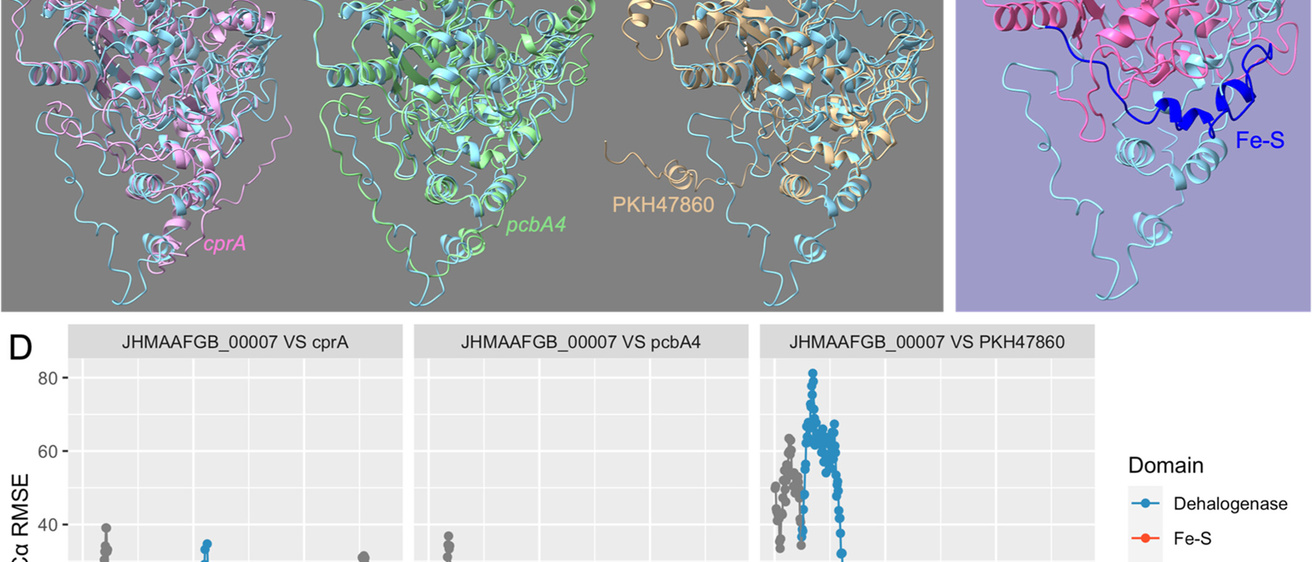Project 5 researchers were recently featured in a Superfund Research Program Research Brief. The brief detailed Project 5 research as published in Environmental Science & Technology. The article is entitled "Genome-Resolved Metagenomics and Metatranscriptomics Reveal Insights into the Ecology and Metabolism of Anaerobic Microbial Communities in PCB-Contaminated Sediments."
To evaluate the growth of naturally occurring interactions between organohalide-respiring bacteria Dehalococcoides and key supporting microorganisms (e.g., production of H2, acetate, and corrinoids) in PCB-contaminated sediments, metagenomic and metatranscriptomic sequencing was conducted on DNA and RNA extracted from sediment microcosms, showing evidence of both Dehalococcoides growth and PCB dechlorination.
Next, the team pieced together the short DNA sequences using a computer program, essentially reconstructing the microbial genomes found in each microcosm. In total, they produced 160 of these metagenome assembled genomes (MAGs), including three from Dehalococcoides bacteria.
The researchers found that 112 MAGs contained genes to generate metabolic byproducts, like hydrogen, which were related to Dehalococcoides growth. Of those, the team identified 31 MAGs that expressed genes at the same time as the Dehalococcoides MAGs. The findings suggest that the activity of microbes that produce more of those factors could improve bioremediation by Dehalococcoides, according to the researchers.
The work demonstrated the power of genome-resolved metagenomic and metatranscriptomic analyses, which unify taxonomy and function, in investigating the ecology of dehalogenating microbial communities.
